Home>Storage Ideas>Bedroom Storage>How To Clean Antique Linens And Clothing
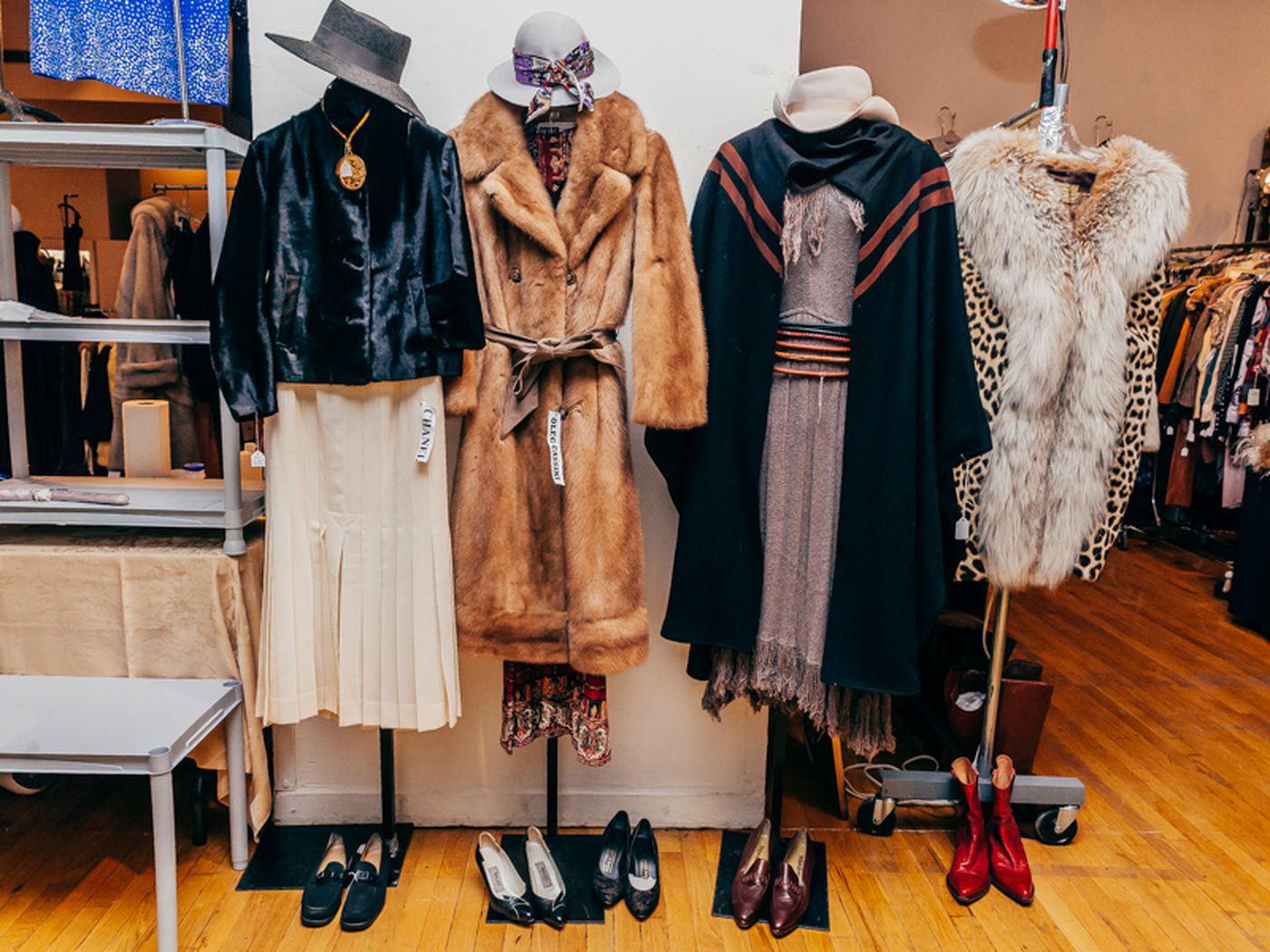

Bedroom Storage
How To Clean Antique Linens And Clothing
Modified: January 24, 2024
Learn how to effectively clean and preserve your antique linens and clothing with our expert tips. Transform your bedroom storage by maintaining and caring for these cherished items.
(Many of the links in this article redirect to a specific reviewed product. Your purchase of these products through affiliate links helps to generate commission for Storables.com, at no extra cost. Learn more)
Introduction
Welcome to our comprehensive guide on how to clean antique linens and clothing! Antique textiles are not only valuable in terms of historical significance, but they also hold sentimental value for many individuals. However, cleaning antique linens and clothing can be a delicate task, requiring careful attention to detail and specialized techniques. In this article, we will provide you with step-by-step instructions on how to safely clean and care for your prized antique textiles.
Before diving into the cleaning process, it is important to note that not all antique linens and clothing can be safely cleaned at home. Some items may be too fragile or highly prone to damage, making it necessary to seek professional help. If you are unsure about the condition or appropriate cleaning methods for your antique textiles, consult a reputable textile conservation specialist or museum curator for guidance.
Proper preparation is key when it comes to cleaning antique linens and clothing. Begin by carefully inspecting each item for any signs of damage or deterioration. Look for tears, loose threads, or weakened areas that may require restoration before cleaning. Make note of any stains, discoloration, or yellowing that will need attention during the cleaning process.
Once you have assessed the condition of your antique textiles, it is time to proceed with testing for colorfastness. This step is crucial to prevent color bleeding or fading during the cleaning process. To test for colorfastness, dampen a small, inconspicuous area of the fabric and apply a gentle detergent or a specialized textile cleaner. Blot the area with a white cloth and check for any transfer of color. If there is no color transfer, it is safe to proceed with cleaning. However, if you notice color bleeding, consult a professional for further guidance.
Now that you have prepared your antique linens and clothing and tested for colorfastness, it’s time to move on to the cleaning methods. In the following sections, we will provide step-by-step instructions for both hand-washing and machine washing antique textiles. Remember to always use gentle detergent specifically designed for delicate fabrics and avoid harsh chemicals or bleach that can cause irreversible damage.
It’s important to note that hand-washing is often the preferred method for cleaning antique textiles, as it allows for greater control and minimizes the risk of damage. However, if the item is in relatively good condition and the care instructions permit machine washing, we will also provide guidelines for using a gentle cycle on your washing machine.
After the cleaning process, we will guide you through the proper methods of drying and ironing antique linens and clothing. We will also discuss effective stain removal techniques for common types of stains and address how to deal with yellowing and discoloration that may occur over time.
Lastly, we will cover the best practices for storing your freshly cleaned antique linens and clothing. Proper storage is essential to prevent further damage and preserve the longevity of your cherished textiles. We will offer tips on choosing the right storage materials, handling, folding, and protecting against pests and environmental factors.
By following the instructions and tips outlined in this guide, you can ensure that your antique linens and clothing are beautifully restored and well-maintained for years to come. Let’s dive in and discover the secrets to cleaning and preserving these precious pieces of history!
Key Takeaways:
- Delicate Care for Timeless Treasures: Learn how to delicately clean, remove stains, and preserve antique linens and clothing, ensuring their longevity and beauty for generations to come.
- Expert Tips for Antique Textile Preservation: Discover the secrets to safely clean, handle discoloration, and store cherished antique linens and clothing, preserving their historical significance and sentimental value.
Read more: How To Store Antique Quilts
Preparing for Cleaning
Before you begin the cleaning process for your antique linens and clothing, it is crucial to properly prepare the items. Taking the time to prepare them will help minimize the risk of damage and ensure the best possible outcome. Here are some important steps to follow:
- Inspecting for Damage: Carefully examine your antique textiles for any signs of damage, such as tears, frayed edges, or loose threads. These areas may require special attention or repair before cleaning. Note down any areas that need extra care so you can address them appropriately.
- Removing Loose Dirt and Debris: Gently shake out or brush off any loose dirt, dust, or debris from your antique linens and clothing. Use a soft-bristled brush or a vacuum with a brush attachment to gently remove particles without causing additional damage.
- Untangling and Unfolding: If your linens or clothing have been stored for an extended period, they may be tangled or folded in ways that have created creases. Carefully untangle and unfold the fabric to its natural shape, taking care not to force or stretch it excessively.
- Securing Fragile Areas: If you have identified any areas that are particularly fragile or prone to damage, consider securing them before cleaning. Use small, loose stitches or delicate fabric adhesive to reinforce weak seams or prevent further unraveling of loose threads.
- Documenting and Photographing: Before you start the cleaning process, it can be helpful to document the current condition of your antique textiles. Take detailed photographs or make notes about any existing stains, discoloration, or damages. This documentation will serve as a reference point and can assist you in evaluating the effectiveness of your cleaning efforts.
- Setting up a Clean and Safe Workspace: Prepare a clean and spacious area where you can safely handle and clean your antique linens and clothing. Ensure that the space is free from any potentially damaging objects or substances, such as ink, chemicals, or sharp objects. Cover the work area with a clean, soft cloth or towel to provide a protective surface.
By following these preparatory steps, you will have a solid foundation for the cleaning process. Taking the time to inspect, remove debris, secure fragile areas, and document the condition of your antique textiles will help you approach the cleaning process with confidence and care. With thorough preparation, you can move forward with the next step: testing for colorfastness.
Testing for Colorfastness
Testing for colorfastness is an essential step before proceeding with the cleaning process for your antique linens and clothing. Colorfastness refers to the fabric’s ability to retain its color without bleeding, fading, or transferring onto other fabrics when exposed to water or cleaning agents. Here’s how to test for colorfastness:
- Choose an inconspicuous area: Select a small, hidden area of the fabric, such as an inside seam or a corner, to perform the colorfastness test. Avoid testing on areas that are already discolored or stained, as they may react differently.
- Dampen the area: Gently dampen the chosen area with water. Use a clean, white cloth or sponge to lightly moisten the fabric. Avoid excessively wetting the fabric, as this may lead to unnecessary color bleeding or distortion.
- Apply a cleaning agent: Choose a gentle detergent specifically designed for delicate fabrics or a specialized textile cleaner. Apply a small amount of the cleaning agent to the dampened area of the fabric. Be sure to follow the instructions provided by the manufacturer of the cleaner.
- Blot and inspect: Gently blot the area with a clean, white cloth or sponge. Check the cloth for any color transfer. If you notice color bleeding or fading on the cloth, it indicates that the fabric is not colorfast. In such cases, it is best to consult a professional textile conservator for further guidance.
- Assess the fabric’s reaction: After blotting, observe the tested area of the fabric for any changes. Look for signs of color bleeding, fading, or fabric damage. If there are no adverse reactions, such as significant color transfer or fabric distortion, it is generally safe to proceed with the cleaning process. However, always exercise caution and evaluate the results of the test before continuing.
Testing for colorfastness is crucial to prevent any unwanted color bleeding or fading during the cleaning process. By performing this simple test, you can ensure that your antique linens and clothing will retain their original colors and patterns. Remember that if you notice any adverse reactions during the colorfastness test, it is recommended to seek professional assistance to avoid further damage.
Now that you have tested for colorfastness and determined that the fabric is suitable for cleaning, you are ready to move on to the next steps: washing your antique linens and clothing. In the following sections, we will provide detailed instructions on both hand-washing and machine washing methods to help you effectively clean your precious textile treasures.
Washing Antique Linens and Clothing
When it comes to washing antique linens and clothing, it is essential to approach the process with care and use gentle cleaning methods to avoid causing damage. Cleaning antique textiles requires a delicate touch and specific techniques to ensure their preservation. In the following sections, we will outline both hand-washing and machine washing methods for cleaning your antique linens and clothing.
Hand-Washing Method:
Hand-washing is often the preferred method for cleaning antique textiles, as it allows for greater control and minimizes the risk of damage. Here’s how to hand-wash your antique linens and clothing:
- Fill a clean basin or sink: Start by filling a basin or sink with lukewarm water. Avoid using hot water, as it can cause shrinkage or damage the delicate fibers of the fabric. Add a small amount of gentle detergent specifically designed for delicate fabrics. Swirl the water gently to ensure the detergent is evenly distributed.
- Submerge the fabric: Carefully place the antique linen or clothing into the soapy water, ensuring that it is fully submerged. Gently agitate the fabric by swirling it around with your hands. Avoid vigorous rubbing or wringing, as this can cause distortion or tearing.
- Spot treat stains: If there are specific stains present on the fabric, you can use a soft brush or a clean cloth to gently spot treat them. Apply a small amount of mild detergent directly to the stained area and gently work it in using circular motions. Allow the detergent to sit on the stain for a few minutes before proceeding to the next step.
- Drain and rinse: After the fabric has soaked for about 15-20 minutes, carefully drain the soapy water from the basin or sink. Rinse the antique textiles with clean, lukewarm water until all traces of detergent have been removed. Avoid wringing the fabric and instead gently press out excess water by rolling it in a clean towel.
- Drying the fabric: Lay the damp fabric flat on a clean, absorbent towel or a drying rack. Gently reshape the fabric to its original form, smoothing out any wrinkles or folds. Avoid direct sunlight and heat sources, as they can cause fading or damage. Allow the textile to air dry completely before proceeding to the next steps.
Read more: How To Clean An Antique Quilt
Machine Washing Method:
If the care instructions for your antique linens or clothing permit machine washing, you can follow these guidelines for using a gentle cycle:
- Select the appropriate cycle: Choose a delicate or gentle cycle on your washing machine to ensure the least amount of agitation. Also, use cold water to further protect the fabric.
- Place the fabric in a mesh laundry bag: To minimize the risk of tangling or snagging, place the antique textile in a mesh laundry bag before placing it in the washing machine.
- Add a gentle detergent: Use a small amount of mild detergent specifically designed for delicate fabrics. Avoid adding any fabric softeners or bleach, as they can cause damage to the antique textile.
- Choose a slow spin cycle: Opt for a slow spin cycle or select the option to skip the spin altogether. This will reduce the risk of damage caused by excessive spinning.
- Remove promptly and air dry: Once the washing cycle is complete, promptly remove the fabric from the machine to prevent wrinkles from setting in. Lay it flat on a clean, absorbent towel or drying rack and allow it to air dry completely before continuing to the next steps.
Remember, not all antique linens and clothing can be safely machine washed. Always check the care instructions and perform a colorfastness test before deciding on the appropriate cleaning method for your specific antique textiles.
Now that you have successfully washed your antique linens and clothing, it’s time to move on to the next steps: drying and ironing. In the following sections, we will guide you through the proper methods for these tasks to ensure the best results and maintain the integrity of your antique textile treasures.
Hand-Washing Method
Hand-washing is often the preferred method for cleaning antique linens and clothing due to its gentle nature and greater control over the cleaning process. Here’s a step-by-step guide on how to effectively hand-wash your precious antique textiles:
- Fill a clean basin or sink: Start by filling a basin or sink with lukewarm water. Avoid using hot water, as it can cause shrinkage or damage delicate fibers. Add a small amount of a gentle detergent specifically designed for delicate fabrics. Swirl the water gently to ensure the detergent is evenly distributed.
- Submerge the fabric: Carefully place the antique linen or clothing into the soapy water, ensuring that it is fully submerged. Gently agitate the fabric by swirling it around with your hands. Avoid vigorous rubbing or wringing, as this can cause distortion or tearing of the fabric.
- Spot treat stains: If you notice any specific stains on the fabric, you can use a soft brush or a clean cloth to gently spot treat them. Apply a small amount of mild detergent directly to the stained area and gently work it in using circular motions. Allow the detergent to sit on the stain for a few minutes before proceeding with the next steps.
- Drain and rinse: After the fabric has soaked for about 15-20 minutes, carefully drain the soapy water from the basin or sink. Rinse the antique textiles with clean, lukewarm water until all traces of detergent have been removed. Avoid wringing the fabric and instead gently press out excess water by rolling it in a clean towel.
- Drying the fabric: Lay the damp fabric flat on a clean, absorbent towel or a drying rack. Gently reshape the fabric to its original form, smoothing out any wrinkles or folds. Avoid direct sunlight and heat sources, as they can cause fading or damage. Allow the textile to air dry completely before proceeding to the next steps.
Hand-washing allows for a more controlled and gentle cleaning process, minimizing the risk of damage to your antique linens and clothing. However, it is crucial to refrain from using harsh chemicals or excessive force while agitating or manipulating the fabric.
By following these steps, you will be able to effectively hand-wash your antique textiles, removing dirt and stains while preserving their delicate beauty. Remember to always handle the fabric with care and take necessary precautions to avoid any unnecessary damage.
Now that you have mastered the hand-washing method, you can ensure that your antique linens and clothing are clean and ready for the next step: drying and ironing. We will provide you with detailed instructions on these processes in the following sections.
Machine Washing Method
If the care instructions for your antique linens or clothing permit machine washing, you can follow these guidelines to use a gentle cycle on your washing machine:
- Select the appropriate cycle: Choose a delicate or gentle cycle on your washing machine to ensure the least amount of agitation. Also, use cold water to further protect the fabric. Avoid using hot water, as it can cause shrinkage or damage delicate fibers.
- Place the fabric in a mesh laundry bag: To minimize the risk of tangling or snagging, place the antique textile in a mesh laundry bag before putting it in the washing machine. The bag will provide an additional layer of protection during the wash cycle.
- Add a gentle detergent: Use a small amount of mild detergent specifically designed for delicate fabrics. Avoid adding any fabric softeners or bleach, as they can cause damage to the antique textile. Follow the recommended dosage of the detergent as per the instructions on the packaging.
- Choose a slow spin cycle: Opt for a slow spin cycle if available on your washing machine, or select the option to skip the spin altogether. This will reduce the risk of damage caused by excessive spinning and help preserve the integrity of the fabric.
- Remove promptly and air dry: Once the washing cycle is complete, promptly remove the fabric from the machine to prevent wrinkles from setting in. Lay it flat on a clean, absorbent towel or a drying rack and allow it to air dry completely. Avoid using a dryer, as the heat may cause shrinking or damage to delicate fibers.
It is important to note that not all antique linens and clothing can be safely machine washed. Always check the care instructions provided by the manufacturer or consult with a textile preservation specialist before deciding on the appropriate method for cleaning your specific antique textiles.
By following these guidelines, you can safely and effectively clean your antique linens and clothing using a washing machine. The gentle cycle, cold water, and proper use of a mesh laundry bag will help minimize the risk of damage to the delicate fabric.
After machine washing your antique textiles, remember to handle them with care during the drying process. Air drying is the preferred method, as it reduces the risk of damage caused by heat and excessive agitation. Allow the fabric to dry completely before proceeding to the next steps.
Now that you have successfully cleaned your antique linens and clothing using the machine washing method, it’s time to move on to the next steps: drying and ironing. We will provide you with detailed instructions on these processes in the following sections.
Drying and Ironing
Proper drying and ironing techniques are crucial to preserving the quality and beauty of your antique linens and clothing after cleaning. Here are some guidelines to follow for drying and ironing:
Read more: How To Clean Antique Picture Frames
Drying:
- Lay the fabric flat: After washing, gently remove any excess water by pressing the fabric between towels. Avoid wringing or twisting the fabric, as this can cause damage or distortion. Lay the damp textile flat on a clean, absorbent towel or a drying rack.
- Reshape and smooth out wrinkles: Gently reshape the fabric to its original form, smoothing out any wrinkles or folds. Use your hands or a clean, dry cloth to carefully pat and smooth the fabric. Take your time to ensure the fabric is evenly spread and free from any creases.
- Avoid direct sunlight and heat sources: Place the fabric in a well-ventilated area away from direct sunlight and heat sources such as radiators and heaters. Direct exposure to sunlight and heat can cause fading and damage the delicate fibers of the antique textile.
- Allow the fabric to air dry completely: Depending on the thickness and size of the textile, drying times may vary. It is important to allow the fabric to air dry completely before proceeding to the next steps. Avoid rushing the drying process, as moisture trapped in the fabric can lead to mildew or odors.
Ironing:
- Check ironing instructions: Refer to the care instructions provided by the manufacturer or consult a textile preservation specialist to determine the appropriate ironing temperature and settings for your antique linens and clothing. Different fabrics may require specific care during the ironing process.
- Use a clean, dry iron: Ensure that your iron is clean and dry to prevent any stains or debris from transferring onto the fabric. If necessary, wipe the iron plate with a clean cloth to remove any residue or buildup before use.
- Test iron temperature: Before ironing the entire fabric, test a small, inconspicuous area with the lowest temperature setting to determine how the fabric responds. Gradually increase the temperature if needed, but be cautious to avoid scorching or burning the antique textile.
- Use a protective layer: To further protect the antique fabric, place a clean, lightweight cotton or linen cloth over the textile before ironing. This will act as a barrier between the iron and the fabric, reducing the risk of direct heat damage or shine.
- Iron in gentle motions: When ironing, use gentle, sweeping motions instead of pressing down heavily on the fabric. Start from the center of the fabric and work your way outward to avoid stretching or distorting the textile. Pay special attention to delicate details and trims, ironing them carefully and without applying excessive pressure.
By following these drying and ironing guidelines, you can ensure that your antique linens and clothing are properly cared for after cleaning. Remember to handle the fabric with care and pay attention to any specific instructions or recommendations provided by textile preservation specialists.
Now that your antique textiles are clean, dry, and neatly ironed, you can admire their restored beauty. However, it is important to be aware of common issues such as stains, yellowing, and discoloration that may affect the appearance of antique linens and clothing over time. In the following sections, we will discuss effective stain removal techniques and provide tips for dealing with yellowing and discoloration to help you maintain the quality and beauty of your cherished antique textiles.
Stain Removal Techniques
Stains can be a common issue with antique linens and clothing, but with the right techniques and products, they can often be successfully removed or minimized. However, it is important to approach stain removal with caution, as improper methods or harsh chemicals can cause irreversible damage to the delicate fabric. Here are some effective stain removal techniques to consider:
1. Pretreatment:
Before attempting any stain removal method, it is essential to pretreat the stain. Start by gently blotting the stain with a clean, white cloth or paper towel to absorb any excess liquid or residue. Avoid rubbing the stain, as it can further embed it into the fabric.
Read more: How To Clean An Antique Waffle Iron
2. Gentle Soap and Water:
For many types of stains, a simple mixture of gentle soap and water can often do the trick. Mix a small amount of a mild liquid detergent with lukewarm water. Dip a clean cloth or sponge into the soapy solution and gently blot the stained area. Rinse the area with clean water and blot to remove any soapy residue.
3. Lemon Juice:
Lemon juice can be particularly effective at treating stains on antique textiles. Squeeze fresh lemon juice onto a clean cloth or directly onto the stain. Gently dab the stain and let the lemon juice sit for a few minutes. Rinse the area with clean water and blot dry.
4. Vinegar Solution:
A mixture of vinegar and water can be useful for removing certain stains. Create a solution with equal parts white vinegar and water. Apply the solution to the stain using a clean cloth or sponge. Blot the stain gently and rinse with clean water. Be cautious when using vinegar on delicate fabrics, as it can cause discoloration or damage if not diluted properly.
5. Hydrogen Peroxide:
Hydrogen peroxide can be effective for removing stubborn stains. Always test it on a hidden area of the textile first, as it can bleach or damage certain fabrics. Apply a small amount of hydrogen peroxide to a clean cloth and gently dab the stain. Rinse the area thoroughly with clean water after treating the stain.
Read more: How To Clean Antique Hand Tools
6. Professional Stain Removers:
If the stain persists or you are dealing with a particularly delicate or valuable antique textile, it may be best to seek professional help. Professional textile conservators have specialized knowledge and access to professional-grade stain removers that are safe for delicate fabrics. Contact a reputable textile preservation specialist or museum curator for guidance.
Remember, every stain and fabric is unique, and different techniques may work better for specific types of stains. It is always a good idea to test any stain removal method on a small, inconspicuous area of the fabric before treating the entire stain. If you are uncertain or uncomfortable with the stain removal process, consult a professional to ensure the best results and avoid causing any further damage to your antique linens and clothing.
Now that you are equipped with effective stain removal techniques, let’s move on to addressing another common concern with antique textiles: yellowing and discoloration. In the next section, we will discuss causes and provide tips for dealing with these issues.
Dealing with Yellowing and Discoloration
Over time, antique linens and clothing may develop yellowing or discoloration, which can detract from their original beauty. These issues can be caused by factors such as age, exposure to light, improper storage, or even previous cleaning methods. While complete restoration may not always be possible, there are steps you can take to minimize and improve yellowing and discoloration:
1. Gentle Bleaching:
If the fabric is white or light-colored, gentle bleaching methods such as using oxygen-based bleaches or white vinegar can help remove mild yellowing. Follow the instructions provided by the product manufacturer or dilute white vinegar with water and gently dab the yellowed areas. Rinse thoroughly with clean water afterwards. Be cautious with bleaching, as harsh bleach or improper application can cause further damage to delicate fibers.
2. Sunlight Exposure:
Exposing the fabric to sunlight for short periods, such as hanging it outside on a sunny day, can help lessen yellowing and discoloration. Sunlight naturally bleaches and rejuvenates the fabric. However, be mindful not to leave the fabric out for too long to avoid overexposure, as prolonged sunlight can also cause fading.
Read more: How To Clean Antique Rugs At Home
3. Airing and Refreshing:
Hanging the fabric in a well-ventilated area or using a fabric freshener can help reduce musty odors that often accompany yellowing and discoloration. Allow the fabric to breathe and air out, gently shaking or lightly brushing it to refresh the fibers. Avoid using strong perfumes or air fresheners, as they can leave residues or cause allergic reactions.
4. Professional Restoration:
For valuable or severely discolored antique textiles, consulting a professional textile conservator or restoration specialist is recommended. They have the expertise and access to specialized techniques and materials that can help restore the fabric to its original condition without causing further damage.
5. Proper Storage:
Preventing yellowing and discoloration starts with proper storage. Store antique linens and clothing in a cool, dark, and dry environment to minimize exposure to light, humidity, and atmospheric pollutants. Use acid-free tissue paper or cotton muslin to wrap and cushion the fabrics, helping to maintain their shape and prevent creasing.
6. Display Considerations:
If you choose to display your antique linens and clothing, use UV-filtering glass or acrylic frames to protect them from harmful UV rays. Rotate the displayed pieces periodically to prevent uneven exposure. Avoid displaying them in direct sunlight or near heat sources, which can accelerate yellowing and fading.
While complete reversal of yellowing and discoloration may not always be possible, taking these steps can help improve the appearance of your antique linens and clothing and slow down further degradation. Patience and care are essential when addressing these issues, as hasty or aggressive measures can result in unintended damage to the delicate fabrics.
Now that you are equipped with strategies for dealing with yellowing and discoloration, it’s time to ensure the long-term preservation and storage of your freshly cleaned and restored antique textiles. In the next section, we will provide you with tips on storing your cherished pieces.
Read more: How To Clean Antique Aluminum Waffle Iron
Storing Antique Linens and Clothing
Proper storage is crucial for the long-term preservation of your antique linens and clothing. By implementing the right storage techniques, you can protect these cherished pieces from damage and ensure their longevity. Here are some tips on how to store your antique textiles:
1. Clean and Dry:
Prior to storing your antique linens and clothing, ensure that they are clean and completely dry. Residual dirt or moisture can lead to mold, stains, or deterioration during storage. Follow the appropriate cleaning methods outlined in this guide before proceeding with storage.
2. Acid-Free Materials:
When it comes to storing antique textiles, it is essential to use acid-free materials. Acidic paper or cardboard can cause yellowing, deterioration, and discoloration over time. Instead, opt for acid-free tissue paper or unbleached, archival-quality cotton muslin. These materials will help protect the fabric and maintain its integrity.
3. Folding Techniques:
Proper folding techniques are important to prevent creasing and stress on the fabric. When folding, gently pad the folds with acid-free tissue paper to reduce the formation of permanent creases. Avoid folding along the same lines repeatedly. Instead, periodically refold your linens and clothing along different lines to distribute stress evenly.
Read more: How To Antique A Cabinet
4. Storage Containers:
Choose storage containers that are clean, dry, and free from pests. Acid-free archival boxes or drawers are recommended for storing antique textiles. Avoid using plastic bags, as they can trap moisture and promote the growth of mold and mildew. If using plastic containers, ensure they are of archival quality and have proper ventilation.
5. Climate Control:
Maintain a stable climate to protect your antique textiles. High humidity and fluctuating temperatures can promote mold growth and cause damage. Aim for a cool, dry environment, ideally with a relative humidity of around 50% and a temperature between 65-70°F (18-21°C). Avoid storing textiles in basements, attics, or areas prone to temperature and humidity fluctuations.
6. Pest Prevention:
Protect your textiles from pests such as moths, silverfish, or carpet beetles. Consider using anti-pest products like lavender sachets, cedar blocks, or naphthalene balls to repel pests. Ensure that these products do not come into direct contact with your textiles, as they can leave residues or cause staining.
7. Regular Inspection:
Periodically inspect your stored antique textiles to ensure they are in good condition. Check for signs of pests, mold, or any damage. If any issues are identified, take appropriate measures to address them promptly. It is also a good practice to refold or rotate stored items to prevent excessive stress on specific areas.
By implementing these storage techniques, you can help ensure the long-term preservation of your antique linens and clothing. Proper storage will protect your cherished textiles from damage, pests, and environmental factors, allowing you to enjoy them for years to come.
Now that you have learned the essential steps for storing antique linens and clothing, you have the knowledge to maintain and preserve your precious textile treasures. With proper cleaning, care, and storage, your antique textiles will continue to tell their stories and bring beauty to generations to come.
Read more: Who Buys Antique Furniture
Conclusion
Preserving and caring for antique linens and clothing requires a delicate touch and specific techniques to ensure their longevity. By following the steps outlined in this comprehensive guide, you have gained the knowledge necessary to clean, remove stains, handle discoloration, and store your beloved antique textiles.
Throughout this guide, you learned the importance of preparing for cleaning, testing for colorfastness, and choosing the appropriate cleaning method. Whether you opt for the gentle hand-washing method or the machine washing method (if permitted), taking the time to carefully clean your antique linens and clothing will help bring back their vibrancy and beauty.
When it comes to tackling stains, you discovered various effective techniques, including pretreatment, gentle soap and water, lemon juice, vinegar solutions, and professional stain removers. These methods will help you address different types of stains while minimizing the risk of damage to the delicate fabric.
Moreover, you now have the knowledge to deal with yellowing and discoloration, common issues with antique textiles. By employing techniques such as gentle bleaching, sunlight exposure, proper airing, and professional restoration, you can reduce yellowing and enhance the appearance of your antique linens and clothing.
Proper storage techniques are crucial for maintaining the integrity of your antique textiles. Acid-free materials, correct folding techniques, suitable storage containers, climate control, pest prevention, and regular inspections will help safeguard your textile treasures for years to come.
By following these guidelines, you can ensure that your antique linens and clothing continue to be cherished and enjoyed by future generations. However, it is important to note that each piece is unique, and it may be necessary to seek professional assistance for more delicate or valuable textiles.
Remember, the process of caring for antique textiles requires patience, attention to detail, and a gentle touch. With proper cleaning, stain removal, handling of discoloration, and storage, you can maintain the beauty and value of your treasured antique linens and clothing.
Now it’s time to put your knowledge into practice and start preserving and caring for your antique textiles. Enjoy the process of reviving and protecting these pieces of history, and let their beauty and stories continue to shine for years to come!
Frequently Asked Questions about How To Clean Antique Linens And Clothing
Was this page helpful?
At Storables.com, we guarantee accurate and reliable information. Our content, validated by Expert Board Contributors, is crafted following stringent Editorial Policies. We're committed to providing you with well-researched, expert-backed insights for all your informational needs.

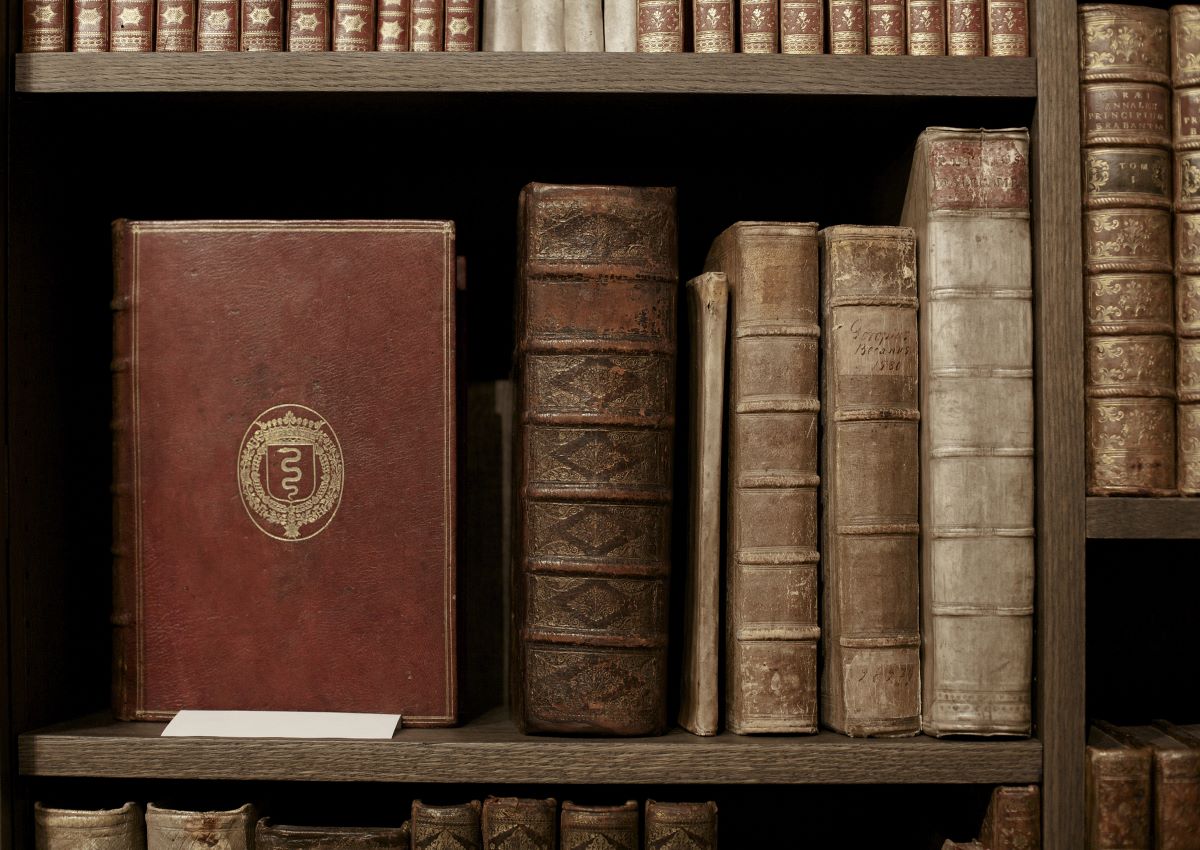
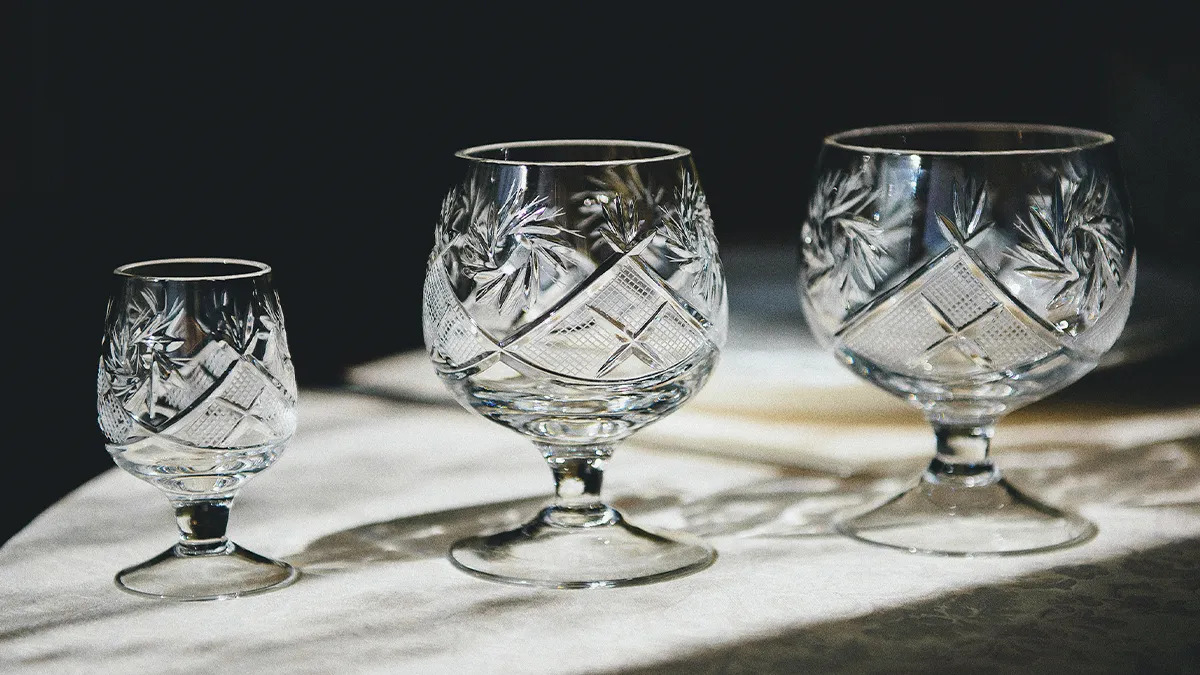
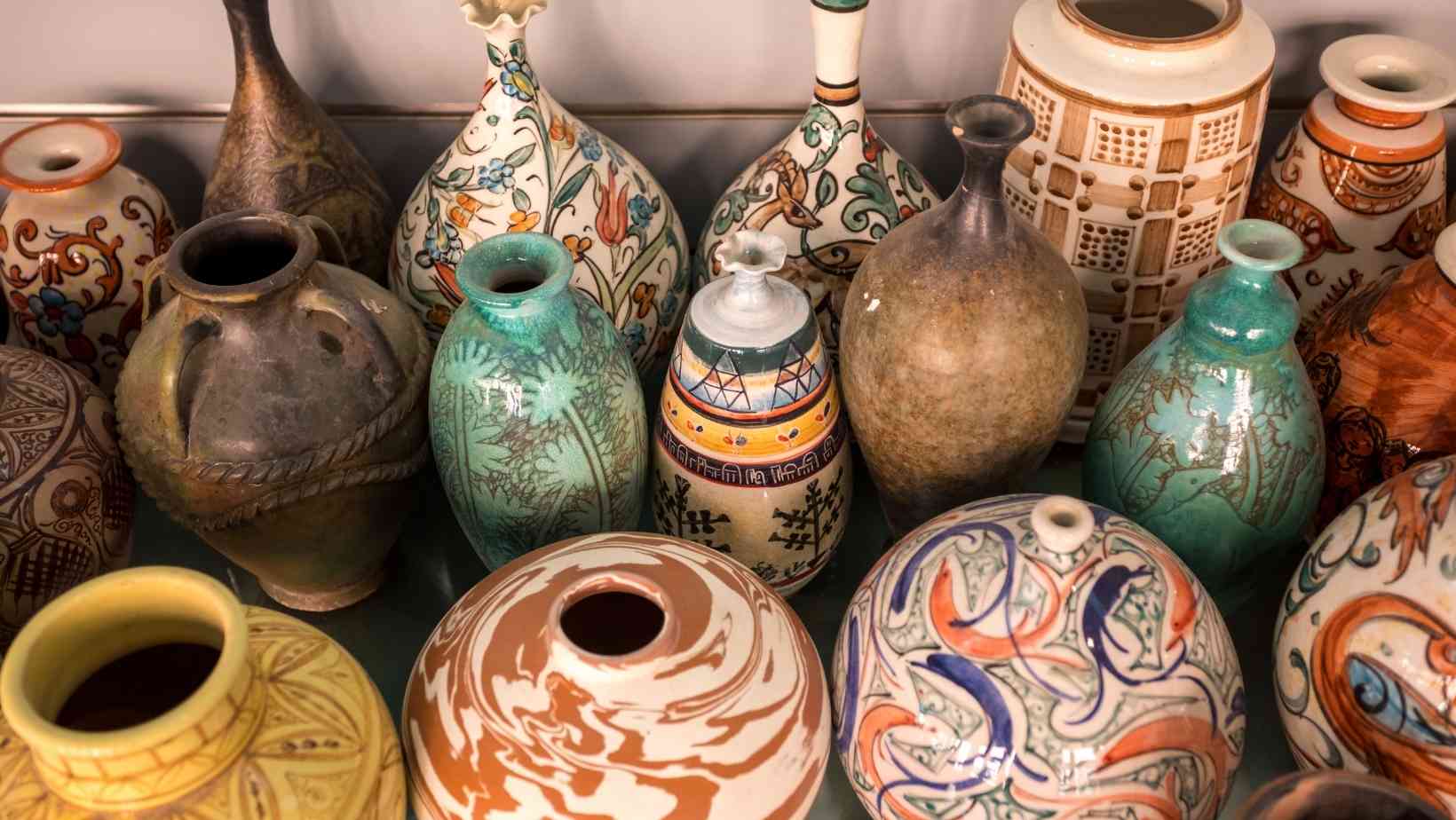
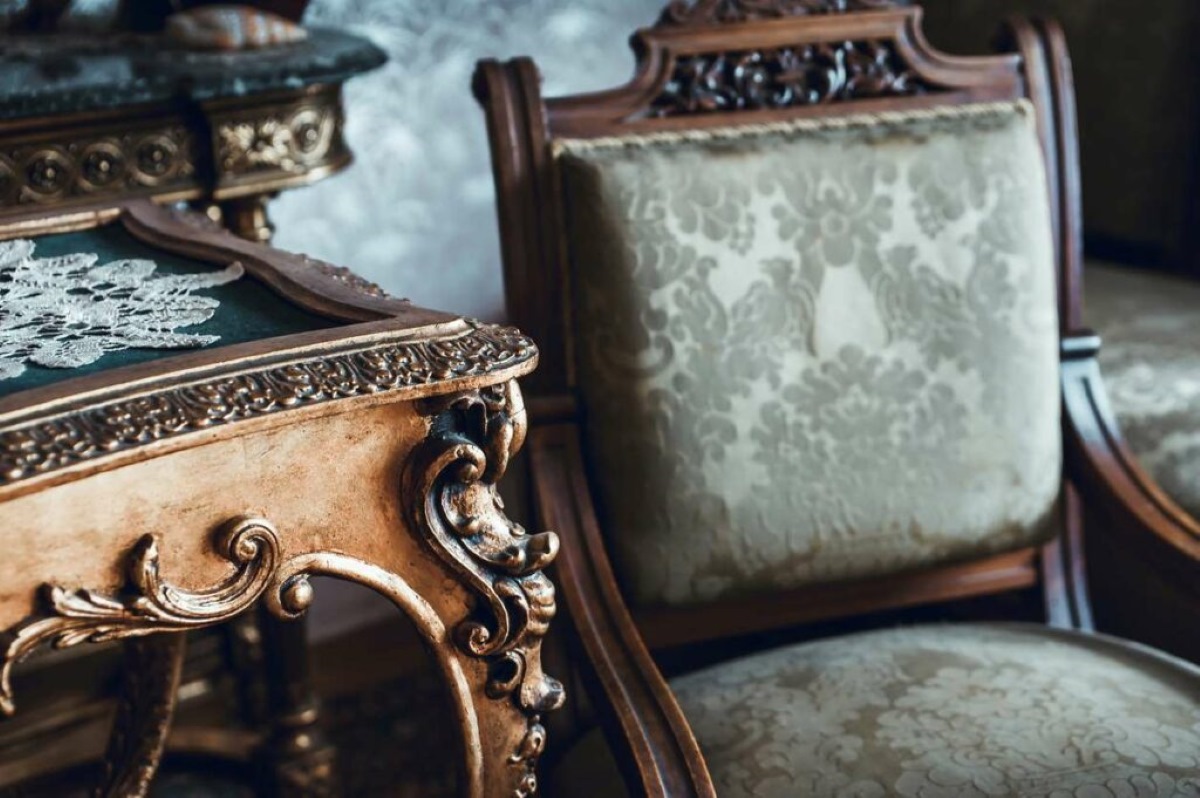
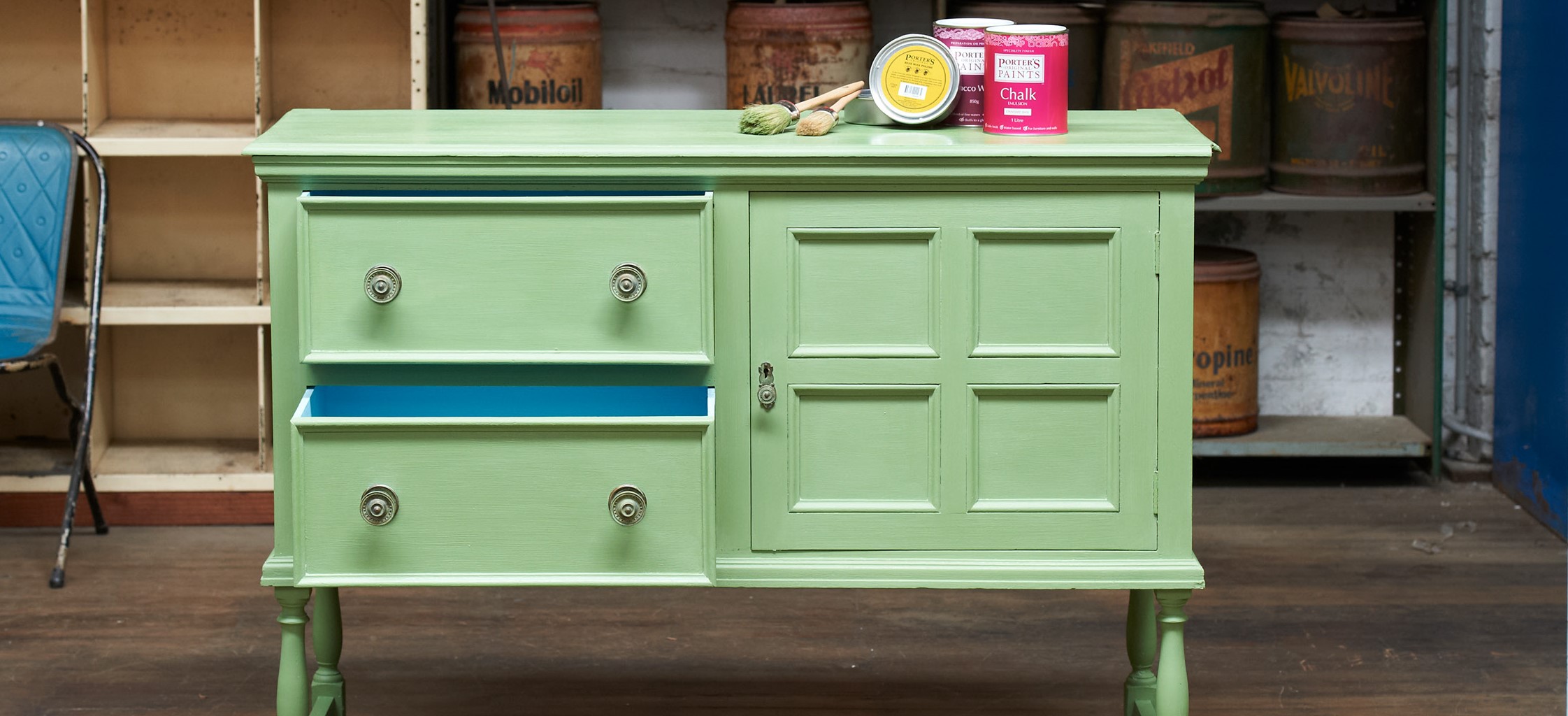
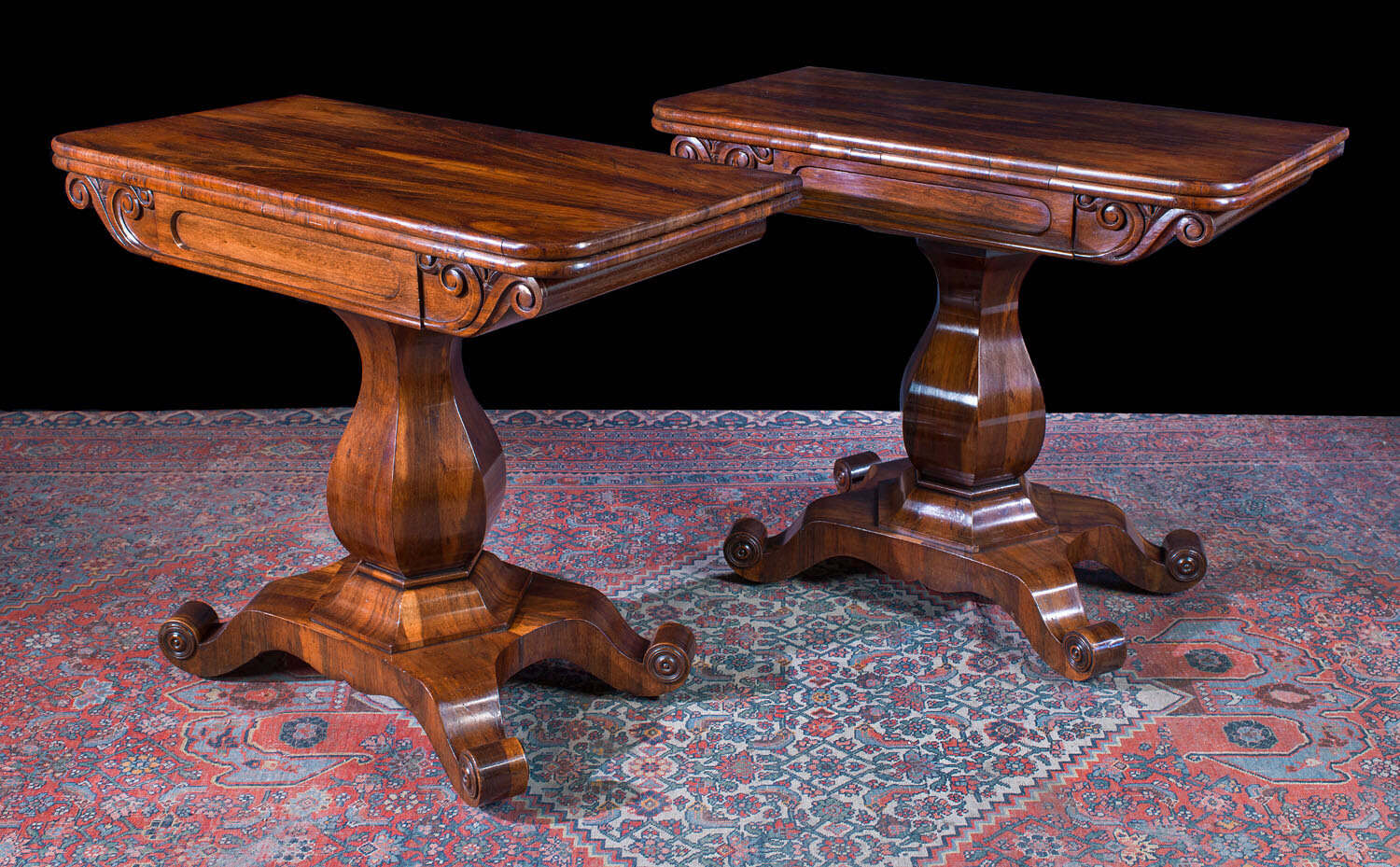

0 thoughts on “How To Clean Antique Linens And Clothing”